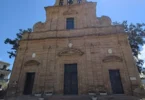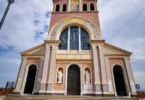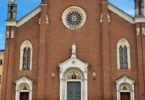In sixteenth-century Rome, one of the most popular pilgrimages was the “Tour of the Seven Churches.” This tour included Saint John Lateran, Saint Peter’s in the Vatican, Saint Paul Outside the Walls, Saint Mary Major, Saint Lawrence Outside the Walls, Holy Cross in Jerusalem, and Saint Sebastian Outside the Walls.
The Archbasilica Cathedral of the Most Holy Savior and of Saints John the Baptist and John the Evangelist in the Lateran (Italian: Arcibasilica del Santissimo Salvatore e dei Santi Giovanni Battista ed Evangelista in Laterano), also known as the Papal Archbasilica of Saint John [in] Lateran, Saint John Lateran, or the Lateran Basilica, is the cathedral church of the Diocese of Rome in the city of Rome, and serves as the seat of the bishop of Rome, the pope.
The archbasilica of Saint John Lateran, Rome lies outside of Vatican City proper, which is located approximately 4 kilometres (2.5 mi) to the northwest. Nevertheless, as properties of the Holy See, the archbasilica and its adjoining edifices enjoy an extraterritorial status from Italy, pursuant to the terms of the Lateran Treaty of 1929. The church is the oldest and highest ranking of the four major papal basilicas as well as one of the Seven Pilgrim Churches of Rome, holding the unique title of “archbasilica”.
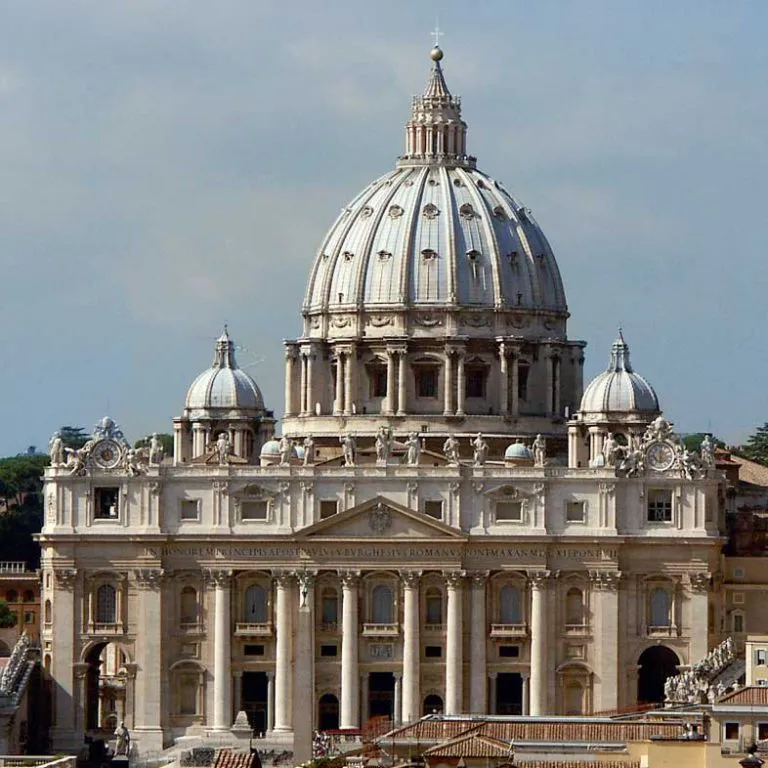
The Papal Basilica of Saint Peter in the Vatican (Italian: Basilica Papale di San Pietro in Vaticano), or simply Saint Peter’s Basilica (Latin: Basilica Sancti Petri), is a church built in the Renaissance style located in Vatican City, the papal enclave that is within the city of Rome, Italy. It was initially planned by Pope Nicholas V and then Pope Julius II to replace the aging Old St. Peter’s Basilica, which was built in the fourth century by Roman emperor Constantine the Great. Construction of the present basilica began on 18 April 1506 and was completed on 18 November 1626.
Designed principally by Donato Bramante, Michelangelo, Carlo Maderno and Gian Lorenzo Bernini, St. Peter’s is the most renowned work of Renaissance architecture and the largest church in the world by interior measure. While it is neither the mother church of the Catholic Church nor the cathedral of the Diocese of Rome (these equivalent titles being held by the Archbasilica of Saint John Lateran in Rome), St. Peter’s is regarded as one of the holiest Catholic shrines. It has been described as “holding a unique position in the Christian world”, and as “the greatest of all churches of Christendom.”
Catholic tradition holds that the basilica is the burial site of Saint Peter, chief among Jesus’s apostles and also the first Bishop of Rome (Pope). Saint Peter’s tomb is supposedly directly below the high altar of the basilica, also known as the Altar of the Confession. For this reason, many popes have been interred at St. Peter’s since the Early Christian period.
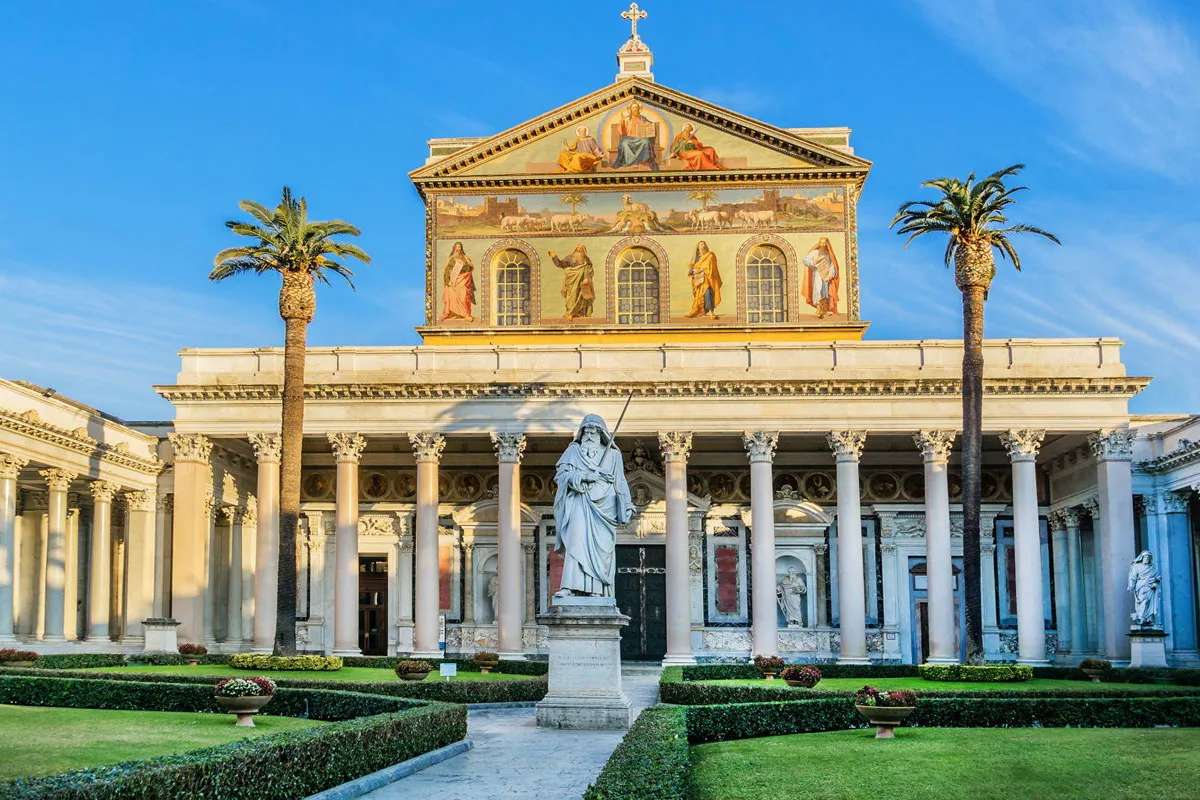
The Papal Basilica of Saint Paul Outside the Walls (Italian: Basilica Papal di San Paolo fuori le Mura) is one of Rome’s four major papal basilicas, along with the basilicas of Saint John in the Lateran, Saint Peter’s, and Saint Mary Major, as well as one of the Seven Pilgrim Churches of Rome. The Basilica is in Italy, but the Holy See (a type of government for the Vatican) owns it. Italy agrees that the Holy See really owns it and gives it special protection like what foreign embassies get under international law.
The Basilica of Saint Mary Major (Italian: Basilica di Santa Maria Maggiore, Latin: Basilica Sanctae Mariae Maioris), or church of Santa Maria Maggiore, is a Major papal basilica as well as one of the Seven Pilgrim Churches of Rome and the largest Catholic Marian church in Rome, Italy.
The basilica enshrines the venerated image of Salus Populi Romani, depicting the Blessed Virgin Mary as the health and protectress of the Roman people, which was granted a Canonical coronation by Pope Gregory XVI on 15 August 1838 accompanied by his Papal bull Cælestis Regina.
Pursuant to the Lateran Treaty of 1929 between the Holy See and Italy, the Basilica is within Italian territory and not the territory of the Vatican City State. However, the Holy See fully owns the Basilica, and Italy is legally obligated to recognize its full ownership thereof and to concede to it “the immunity granted by International Law to the headquarters of the diplomatic agents of foreign States.” In other words, the complex of buildings has a status somewhat similar to a foreign embassy.

The Basilica Papale di San Lorenzo fuori le mura (Papal Basilica of Saint Lawrence outside the Walls) is a Roman Catholic papal minor basilica and parish church, located in Rome, Italy. Basilica, one of Rome’s Seven Pilgrim Churches and a member of the group of five “papal basilicas” was entrusted to the care of the Latin Church patriarchate. Originally, the basilica was under the jurisdiction of the Patriarchate of Jerusalem. It serves as the sacred site where Lawrence one of Rome’s initial seven deacons, martyred in 258, is entombed. Additionally, numerous other saints and Pope Pius IX find their resting place within the Basilica, which remains at the heart of a vast and ancient burial complex.
It is outside of Rome’s large and historic Verano Cemetery and is a shrine to its namesake, San Lorenzo.
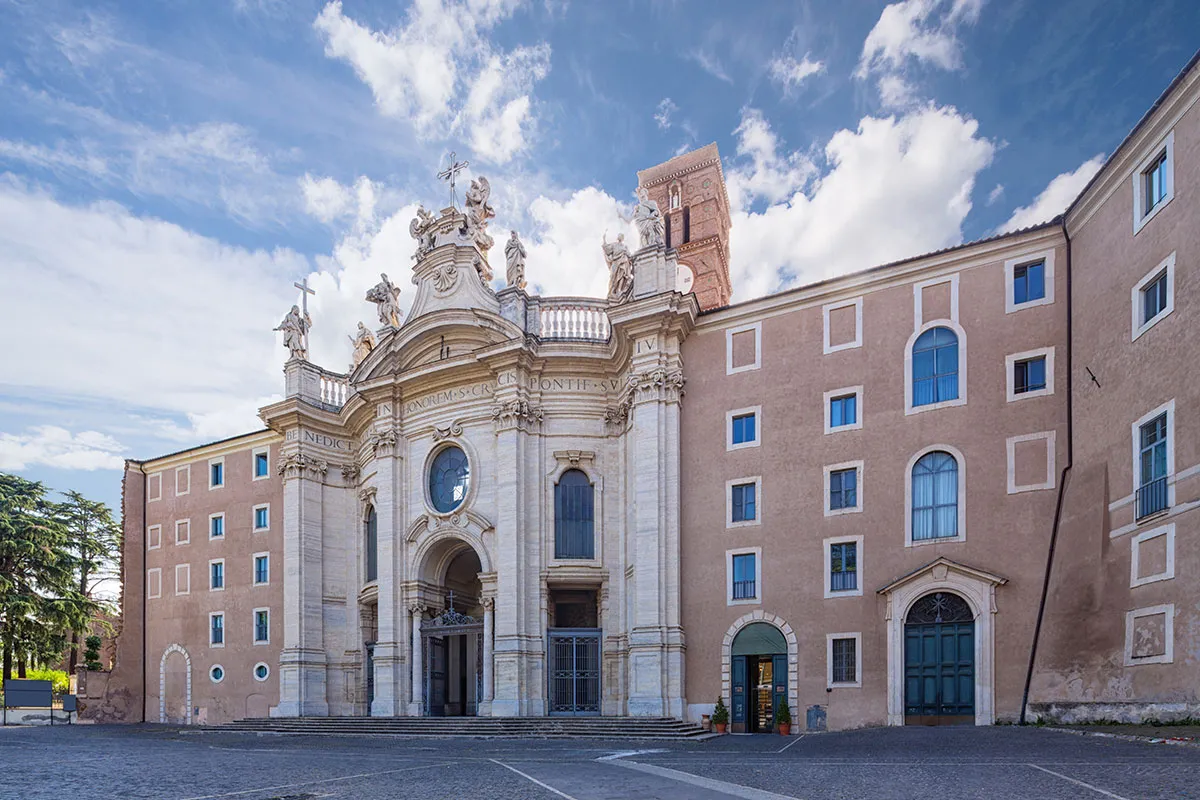
The Basilica of the Holy Cross in Jerusalem or Basilica di Santa Croce in Gerusalemme (Latin: Basilica Sanctae Crucis in Hierusalem) is a Catholic Minor basilica and titular church in rione Esquilino, Rome, Italy. It is one of the Seven Pilgrim Churches of Rome. According to Christian tradition, circa 325, the basilica was consecrated to house the relics of Jesus Christ’s Passion. Empress Helena, the mother of Roman Emperor Constantine I, brought these relics to Rome from the Holy Land. Soil from Jerusalem covered the basilica’s floor, earning it the title “in Hierusalem.” Although not formally dedicated to the Holy Cross of Jerusalem, the basilica was regarded as being “in Jerusalem” in a symbolic manner, similar to how an embassy is considered extraterritorial today. Juan José Omella currently serves as the Cardinal Priest of the Titulus S. Crucis in Hierusalem.
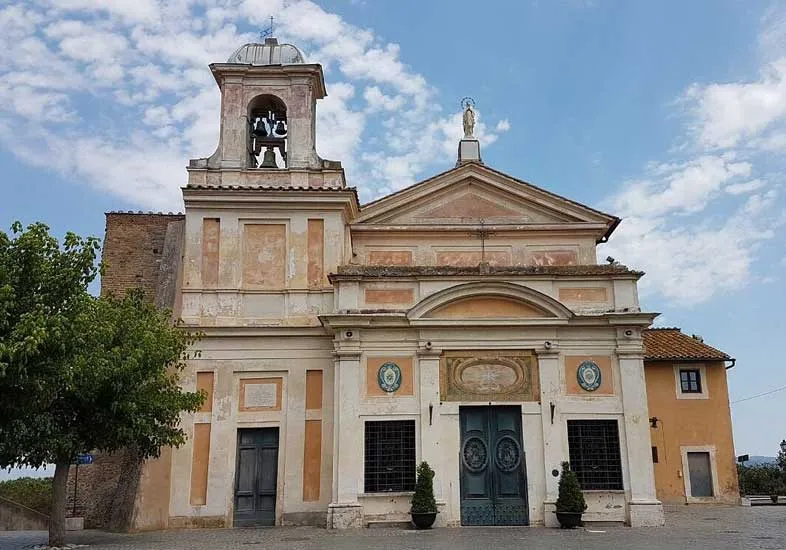
Santuario della Madonna del Divino Amore, or the Sanctuary of Our Lady of Divine Love, is a Roman Catholic shrine in the southern outskirts of Rome dedicated to the Blessed Virgin Mary that consists of two churches: an old church built in 1745 and a new church added to the sanctuary in 1999. The church was included by Pope John Paul II in the pilgrimage of Seven Pilgrim Churches of Rome during the Holy Year 2000.
The sanctuary is the seat of the parish of Santa Maria del Divino Amore in Castel di Leva, erected by virtue of the apostolic letter of Pope Pius X Quamdiu for Roman agri of May 24, 1912, with the decree of the cardinal vicar Francesco Marchetti Selvaggiani Cum Summus Pontifex of December 1, 1932. Since 28 November 2020 the church has been the deaconry of Santa Maria del Divino Amore in Castel di Leva.
The most beautiful and moving place that can be admired while visiting the Sanctuary of the Madonna del Divino Amore is the ex voto room, which is like a room dedicated to the “unexpected”. There are thousands of ex votos. So much so that the Sanctuary struggles to contain them all. Many are a sign of gratitude to the Madonna for a “grace received”, others a simple invocation for help and protection. They express the history and faith of a people, but even more they speak of the power and unpredictability of the Christian God.
A God who chooses whoever he wants, who works as he wants and where he wants, as if to make fun of the presumptuous and ridiculous projects of men. “Here people come to us, while in the parishes they have to go and look for it”, often repeated Don Umberto Terenzi, the first parish priest of Divino Amore,
“The new Shrine of Rome”, as John Paul II defined the Divine Love. For those unfamiliar with Christianity it may seem like a paradox: in a city with a thousand churches rich in history and art; in a city, above all, which bases its faith on the blood of holy martyrs, the Almighty wanted to give a new sign of his mercy in this poor, lost and isolated corner of the Roman countryside. But the Holy Spirit, who is Divine Love, does not follow human logic.

San Sebastiano fuori le mura (Saint Sebastian beyond the Walls), or San Sebastiano ad Catacumbas (Saint Sebastian at the Catacombs), is a minor basilica in Rome, Central Italy. Before the Great Jubilee of 2000, San Sebastiano held the status of one of the Seven Pilgrim Churches of Rome. Despite this change, many pilgrims continue to prefer the traditional list, possibly due to the presence of the Catacombs and the distance of the Santuario della Madonna del Divino Amore, which replaced San Sebastiano in the list, from the inner city.
formerly St. Sebastian Outside-the-Walls (Minor basilica), replaced on pilgrimage route by Pope John Paul II in the year 2000.


